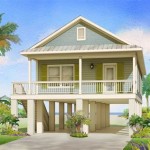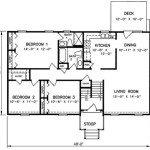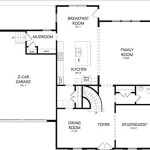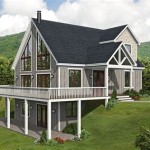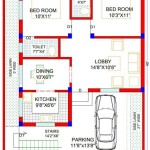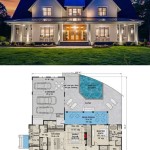Design Your Own Mobile Home Floor Plan: A Comprehensive Guide
The allure of mobile home living stems from its affordability and flexibility. However, the standard floor plans offered by manufacturers may not always align with individual needs and preferences. Designing a custom mobile home floor plan provides an opportunity to create a living space tailored to specific lifestyles, family dynamics, and long-term goals. This article explores the key considerations and steps involved in designing your own mobile home floor plan, ensuring a functional and aesthetically pleasing final product.
Designing a mobile home floor plan differs significantly from designing a traditional home. Constraints related to transportation, manufacturing processes, and adherence to building codes specific to manufactured housing necessitate careful planning. Thorough research and consultation with experienced professionals are crucial to avoid costly mistakes and ensure the project's viability.
Understanding Mobile Home Construction and Limitations
Before embarking on the design process, it is essential to grasp the underlying principles of mobile home construction. Mobile homes are typically built in sections (single-wide, double-wide, or triple-wide) in a factory setting and then transported to the designated site. This modular approach imposes certain limitations on design possibilities.
Structural integrity is paramount. Load-bearing walls and support beams are critical components. Altering or removing these elements without proper engineering consultation can compromise the structural integrity of the entire unit. The dimensions of each section are dictated by transportation regulations, impacting room sizes and overall layout. Maximum width and height restrictions are enforced to facilitate safe and legal transport on public roads.
Plumbing and electrical systems are pre-installed within each section during the manufacturing process. While modifications are possible, they can be complex and expensive. Therefore, it is advisable to strategically plan the placement of bathrooms, kitchens, and laundry areas to minimize extensive rerouting of plumbing and electrical lines.
Building codes governing mobile home construction, often referred to as HUD (Housing and Urban Development) codes, are stringent and must be meticulously followed. These codes address safety standards, including fire resistance, ventilation, and structural requirements. Compliance with HUD codes is not only a legal necessity but also essential for obtaining financing and insurance.
Defining Your Needs and Lifestyle
The foundation of a successful custom floor plan lies in a clear understanding of individual needs and lifestyle. A comprehensive assessment of current and future requirements will guide design decisions and ensure a functional and comfortable living space.
Begin by considering the number of occupants who will reside in the mobile home. This dictates the number of bedrooms and bathrooms required. Anticipate future needs, such as the potential for a growing family or the desire to accommodate guests. If working from home is a necessity, incorporate a dedicated home office space. Similarly, if aging in place is a consideration, prioritize accessibility features such as wider doorways and grab bars in bathrooms.
Evaluate your lifestyle preferences. Are you an avid cook who requires a spacious kitchen with ample counter space? Do you entertain frequently and need a formal dining area? Or do you prefer a more casual, open-concept layout? Consider your hobbies and interests. A dedicated space for crafting, woodworking, or other activities can significantly enhance your quality of life.
Analyze your existing furniture and belongings. Determine the dimensions of your key furniture pieces to ensure they will fit comfortably within the designated rooms. Account for storage needs. Ample closet space, built-in shelving, and attic access can help maintain an organized and clutter-free living environment.
Consider the climate in your region. If you live in a hot climate, prioritize energy-efficient windows and insulation to minimize cooling costs. If you live in a cold climate, consider a fireplace or a high-efficiency heating system. Proper ventilation is crucial in all climates to prevent moisture buildup and maintain healthy indoor air quality.
Creating the Floor Plan: Design Principles and Considerations
Once you have a clear understanding of your needs and lifestyle, you can begin the design process. This involves creating a visual representation of your desired floor plan, either using specialized software or traditional drafting techniques.
Start by sketching a rough draft of the floor plan. Experiment with different layouts and configurations. Consider the flow of traffic throughout the mobile home. The arrangement of rooms should promote easy movement and minimize congestion. The kitchen should be conveniently located near the dining area, and bedrooms should be situated away from noisy living areas.
Pay attention to the orientation of the mobile home on the lot. Maximize natural light by positioning windows to capture sunlight. Consider the prevailing wind direction to optimize ventilation. Protect the mobile home from harsh weather elements, such as strong winds and heavy snow.
Incorporate universal design principles. These principles aim to create a living space that is accessible and usable by people of all ages and abilities. Features such as wider doorways, lever door handles, and roll-under sinks can enhance accessibility and improve overall usability.
Consider the aesthetics of the floor plan. Choose a style that reflects your personal taste. Whether you prefer a modern, minimalist design or a more traditional, cozy aesthetic, ensure that the floor plan complements your overall vision. Select appropriate colors, finishes, and materials to create a cohesive and visually appealing living space.
Review the floor plan with a qualified architect or structural engineer. They can provide valuable feedback on the structural feasibility of your design and identify potential problems. They can also ensure that the floor plan complies with all applicable building codes and regulations.
Fine-tune the floor plan based on the feedback received. Make any necessary adjustments to improve functionality, aesthetics, or code compliance. Iterate on the design until you are completely satisfied with the final product.
Consider the scalability of the design. Can additions or modifications be easily made in the future if your needs change? Designing with future expansion in mind can save time and money in the long run.
Remember to factor in the cost of materials and labor. Custom designs often involve higher costs than standard floor plans. Obtain quotes from multiple builders and suppliers to ensure you are getting the best possible price. Prioritize features that are most important to you and make compromises where necessary to stay within budget.
By carefully considering these aspects and working closely with experienced professionals, one can design a mobile home floor plan that meets individual needs and reflects personal style, turning a manufactured house into a truly custom home.

Manufactured Home Design Floor Plans Cad Pro

10 Great Manufactured Home Floor Plans Mobile Living

Single Wide Mobile Home Floor Plans Factory Select Homes

Triple Wide Floor Plans Mobile Homes On Main

Triple Wide Floor Plans Mobile Homes On Main

The M Custom Modular Home 3 Bedroom Nc
Custom Granny Flats Modular Homes Direct Portable Buildings

Design Your Own Manufactured Home Customization Options Homes Direct

Single Wide Mobile Home Floor Plans Factory Select Homes

Double Wide Mobile Homes Factory Expo Home Center


